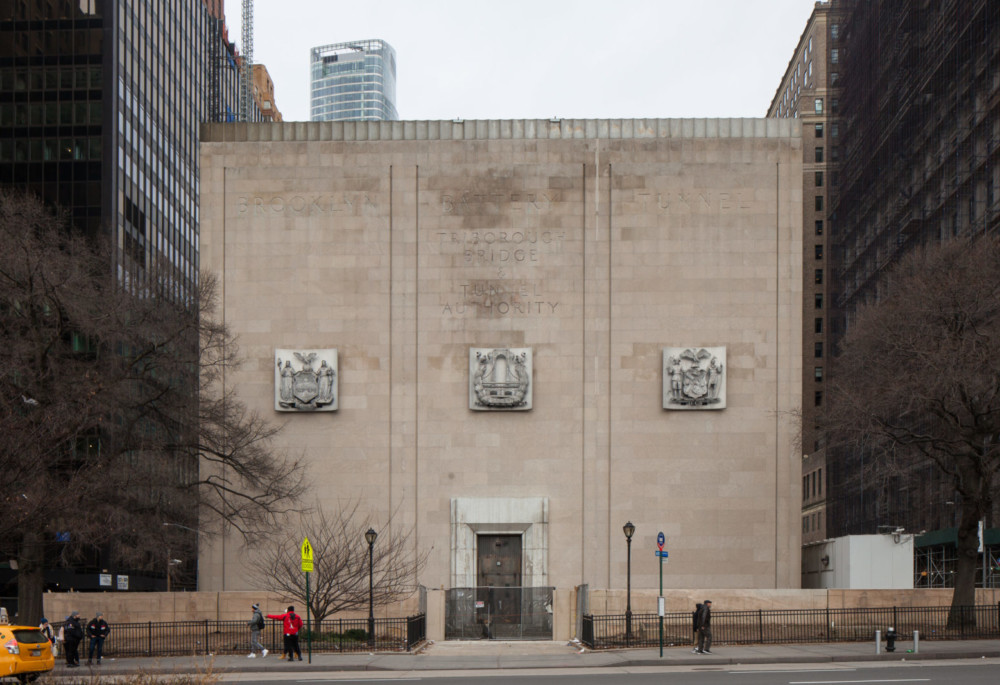BOOKLYN-BATTERY TUNNEL AND BATTERY PLACE
Battery Place, Greenwich Street to Washington Street
1940-50
Ole Singstad, chief engineer through 1946; Ralph Smille, chief engineer after 1946; Erling Owre, architect
The Brooklyn-Battery Tunnel, which connects Lower Manhattan with Brooklyn, was constructed over a ten-year period from 1940 to 1950—including a three-year wartime hiatus—and is the longest tunnel of its type in North America. It replaced the low-rise buildings of the former Syrian Quarter. The severe-looking Moderne style ventilation building at Battery Place was designed by Parks Department architect Aymar Embury II and completed in 1950. The facade inscription facing Battery Park commemorates the 1946 consolidation of the city’s Tunnel Authority and Triborough Bridge Authority into the Triborough Bridge and Tunnel Authority. The other architecturally notable vent building is the white octagon located off the northern tip of Governors Island, designed by the successor firm to McKim, Mead, & White. The Tunnel was renamed in 2012 in honor of former New York State Governor Hugh L. Carey. Historic photo courtesy of The Library of Congress.
